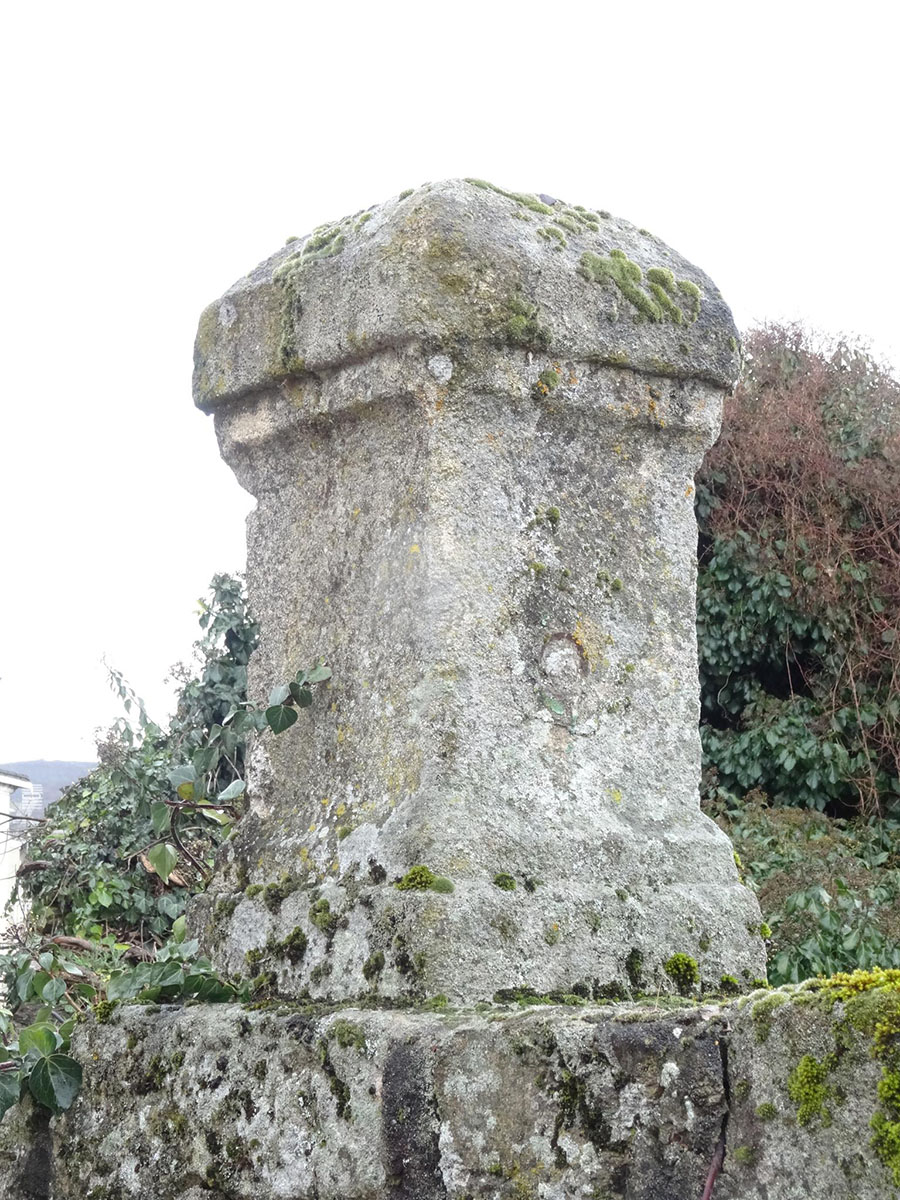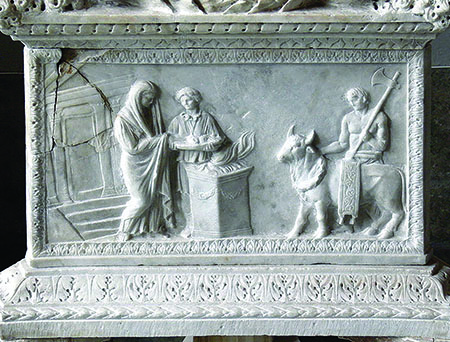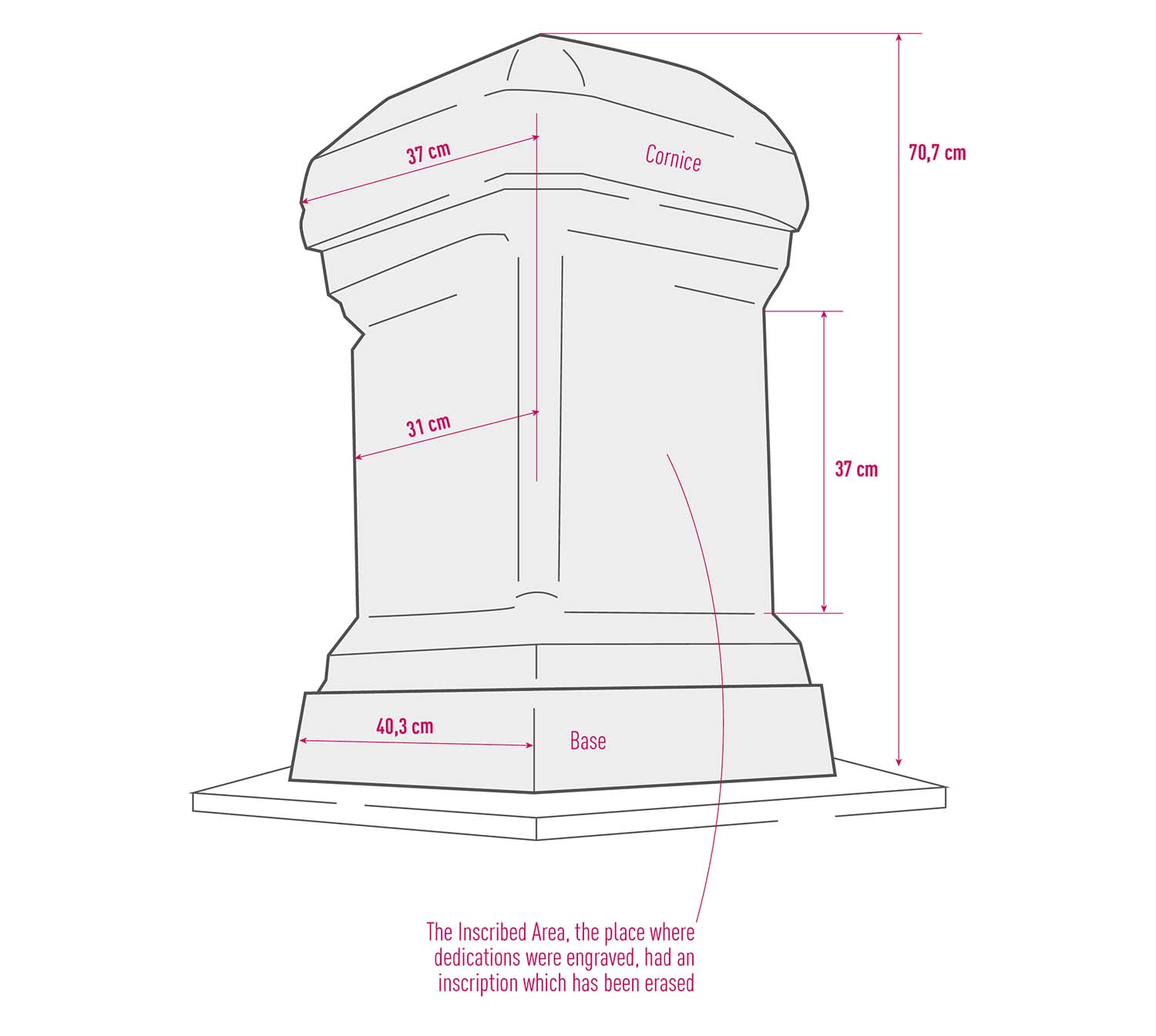
This altar is a small altar of Roman stone that takes the form of a pedestal or column with a quadrangular section. The Galician-Roman people (1st century BC-AD) used it to communicate with the spirit world, hence they made offerings of liquids and vegetables dedicated to their gods and also made animal sacrifices.
This small altar is crowned by an opening in its upper section that is called the foculus, a concave space in which the offerings were burned. On one of the faces you can see the remains of an inscription that was carved.
Thanks to a bronze plaque discovered in Viana in the year 1728 we know the name of the indigenous people that could have inhabited this region before the arrival of the Romans: the Alterniaicines. Also being the name of one of its divinities:

Aegiamuniaeco. Nicolás Tenorio (1904) believed that the current day Viana do Bolo was the Volobria quoted by the Greek geographer Claudio Ptolemy (100-170 AD) or the Volobriga to which Manuel Huerta refers (1736).
It ignores the archaeological context in which this piece appeared hence we cannot say anything about the circumstances of the find.
The Epigraphic Field, the place where the dedications were recorded, had an inscription that was erased.
